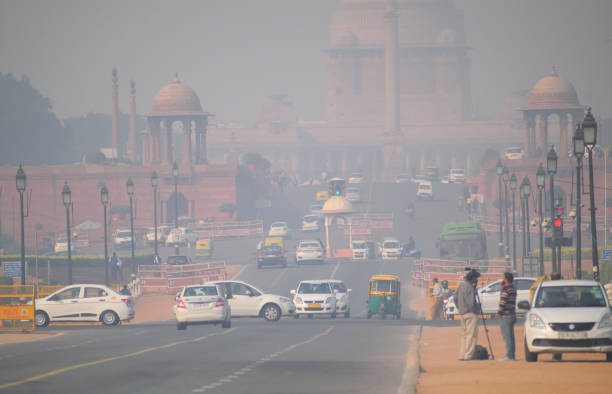New Delhi (Rajeev Sharma): A blanket of haze hovered over the capital on Wednesday morning as Delhi continued to grapple with worsening air pollution, with the Air Quality Index (AQI) clocking in at 335—firmly placing it in the ‘very poor’ category.
According to the Central Pollution Control Board (CPCB), the AQI reading was recorded at 9 a.m., reflecting elevated levels of fine particulate matter in the air, which pose a significant threat to respiratory health. The grim air quality persists despite a forecast of clear skies through the day.
Morning conditions saw heavy humidity, with the India Meteorological Department (IMD) reporting a relative humidity level of 91% at 8:30 a.m. The minimum temperature was noted at 21.8°C, which is 3.4°C above the average for this time of year. The maximum temperature is predicted to reach around 33°C later in the day.
Experts suggest that calm winds, combined with high humidity and low nighttime temperatures, are leading to the trapping of pollutants close to the ground—causing smog to build up, especially during early morning hours.
Delhi’s air quality typically begins to worsen in October as weather conditions shift and external pollution sources, such as stubble burning in neighboring states, begin to contribute more heavily to the local air composition. With crop residue burning expected to increase in the coming weeks, the air quality may dip even further if strong corrective measures aren’t taken.
The AQI scale categorizes readings from 301 to 400 as ‘very poor’, a level where exposure can trigger health issues not only for vulnerable groups but also for the general population. Prolonged exposure can lead to coughing, shortness of breath, eye irritation, and increased risk of chronic respiratory diseases.
Authorities have urged residents to minimize time spent outdoors, particularly during the early morning and late evening hours when pollution concentrations peak. Schools have been advised to limit outdoor activities for children, and health advisories continue to encourage the use of N95 masks and indoor air filtration.
Meanwhile, civic agencies are stepping up enforcement of pollution control measures, including stricter checks on vehicle emissions, regulating construction dust, and exploring cloud seeding options if conditions worsen further.
Delhi, often among the world’s most polluted cities during the winter months, now braces for what could be yet another season of toxic air unless significant interventions curb the rising pollution levels.

